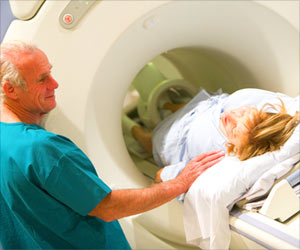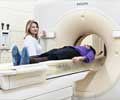
‘The new technique developed, demonstrated on a small sample in a micro CT scanner, could potentially be adapted for medical scanners and used to reduce the amount of radiation millions of people are exposed to each year.’
Tweet it Now
Past studies have suggested CT scans may cause a small increase in lifelong cancer risk because their high-energy wavelengths can damage DNA. Although cells repair this damage, sometimes these repairs are imperfect, leading to DNA mutations in later years. In the new study, published in Physical Review Applied, researchers placed a mask with tiny slits over an X-ray beam, breaking up the beam into beamlets. They then moved the sample being imaged in a cycloidal motion that ensured the whole object was irradiated quickly - that is, no parts of it were missed.
The researchers compared the new technique to conventional CT scanning methods, where a sample rotates as a full beam is directed on to it, finding it delivered the same quality of image at a vastly reduced dose.
Dr Charlotte Hagen (UCL Medical Physics & Biomedical Engineering), first author of the paper and a member of the UCL Advanced X-Ray Imaging Group, said: "Being able to reduce the dose of a CT scan is a long-sought goal. Our technique opens new possibilities for medical research and we believe that it can be adjusted for use in medical scanners, helping to reduce a key source of radiation for people in many countries."
In the NHS, about five million CT scans are performed every year; in the United States, the annual number of CT scans is more than 80 million. CT scanning is thought to account for a quarter of Americans' total exposure to radiation.
Advertisement
The use of beamlets enables a sharper image resolution, as the part of the scanner "reading" the information from the X-ray is able to locate where the information is coming from more precisely.
Advertisement
"This means that the sharpness of the image can be easily adjusted using masks with different-sized apertures, allowing greater flexibility and freeing the resolution from the constraints of the scanner's hardware."
Source-Eurekalert













